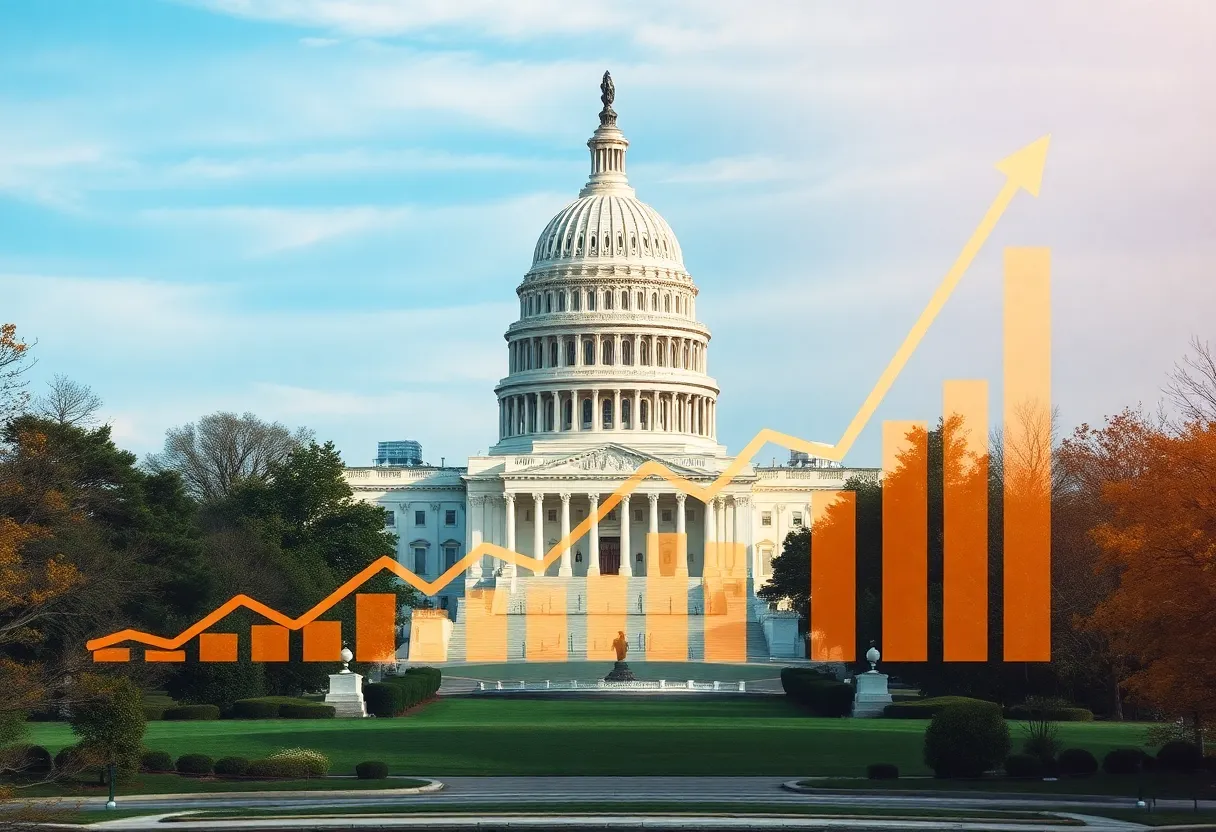

The upward trend of U.S. Treasury yields following the recent credit rating downgrade by Moody's.
Want to target the right audience? Sponsor our site and choose your specific industry to connect with a relevant audience.
Prominent brand mentions across targeted, industry-focused articles
High-visibility placements that speak directly to an engaged local audience
Guaranteed coverage that maximizes exposure and reinforces your brand presence
Interested in seeing what sponsored content looks like on our platform?
May’s Roofing & Contracting
Forwal Construction
NSC Clips
Real Internet Sales
Suited
Florida4Golf
Click the button below to sponsor our articles:
Sponsor Our ArticlesU.S. Treasury yields are rising following Moody’s downgrade of the U.S. credit rating from Aaa to Aa1, marking the first significant downgrade since 1949. The 30-year Treasury yield hit 5.03%, while the 10-year yield increased to 4.459%. This change is raising concerns among investors regarding government borrowing costs, mortgage rates, and consumer debt. Moody’s cited escalated government debt and financing burdens as reasons for the downgrade, indicating a troubling fiscal outlook. Analysts warn that proposed tax cuts may exacerbate the budget deficit, heightening fears about future borrowing and economic stability.
In a significant turn of events for the U.S. financial landscape, Treasury yields have been on the upswing after Moody’s decided to downgrade the U.S. credit rating from Aaa to Aa1. This marks the first major downgrade since 1949, a moment that has sent ripples through the market and left many investors feeling concerned.
On Monday afternoon, the 30-year Treasury yield peaked at around 5.03%, reaching the highest level noted since November 2023. It finally settled at 4.921%, up by 2 basis points. Meanwhile, the 10-year Treasury yield also rose by the same margin to 4.459%, while the 2-year Treasury yield experienced a slight dip, falling by 1 basis point to 3.972%. Just for reference, one basis point is equivalent to 0.01%.
Moody’s cited escalating government debt and financing burdens as key factors for the downgrade. The company pointed out the U.S. government’s mounting budget deficit and the high costs tied to refinancing debt amid rising interest rates. Indeed, the debt and interest ratios for the U.S. are now significantly higher when compared to other sovereign nations rated similarly.
As investor apprehensions grew, the downgrade is now perceived as a symbolic shift in the financial markets. Analysts are keenly observing how this will impact not just government borrowing, but also mortgage rates and consumer debt, which closely track the 10-year Treasury note. The rising yields can often translate to increased cost of borrowing for ordinary consumers, further complicating financial decisions for many.
Experts have weighed in on the situation, highlighting that the proposed tax cuts and spending plans being pushed by House Republicans could exacerbate the budget deficit even more. Such moves would not bode well for fiscal responsibility, adding to the concerns previously outlined by Moody’s regarding the lack of fiscal restraint shown by past administrations. The prevailing sentiment is that current proposals are unlikely to make noticeable cuts to mandatory spending and deficits.
As yields on U.S. Treasuries surge, especially in the long-term domain, it brings back memories of past market reactions, particularly in April 2025 during times of heightened trade tensions due to “reciprocal tariffs.” Investors are now left wondering whether U.S. Treasuries can still be considered a safe-haven asset for global investors or if a different narrative is beginning to unfold.
As the market digests this new information, the journey forward remains uncertain. With rising worries about the fiscal landscape and future policymaking impacting both yields and investor confidence, it’s clear that the road ahead for U.S. Treasury yields and the broader economic outlook will be a closely monitored story. For now, staying informed is essential as we navigate these changing times in the financial world.
News Summary Two U.S. Army soldiers, Sgt. 1st Class Emmett Wilfred Goodridge Jr. and Staff…
News Summary In light of recent U.S. military airstrikes on Iran’s nuclear sites, the Michigan…
News Summary A 57-year-old woman from Montcalm County has won a $1 million prize playing…
News Summary Michigan State University has established a new advisory board to improve its relationship…
News Summary Michigan State University has reached a $30 million settlement with three students who…
News Summary Michigan State University has appointed J Batt as its new athletic director. In…